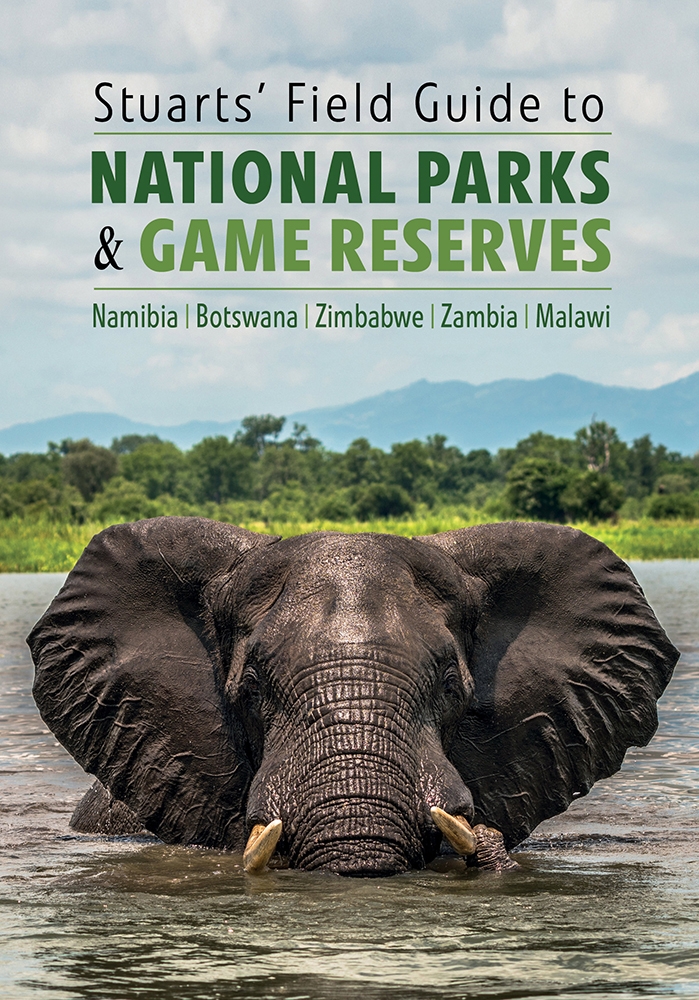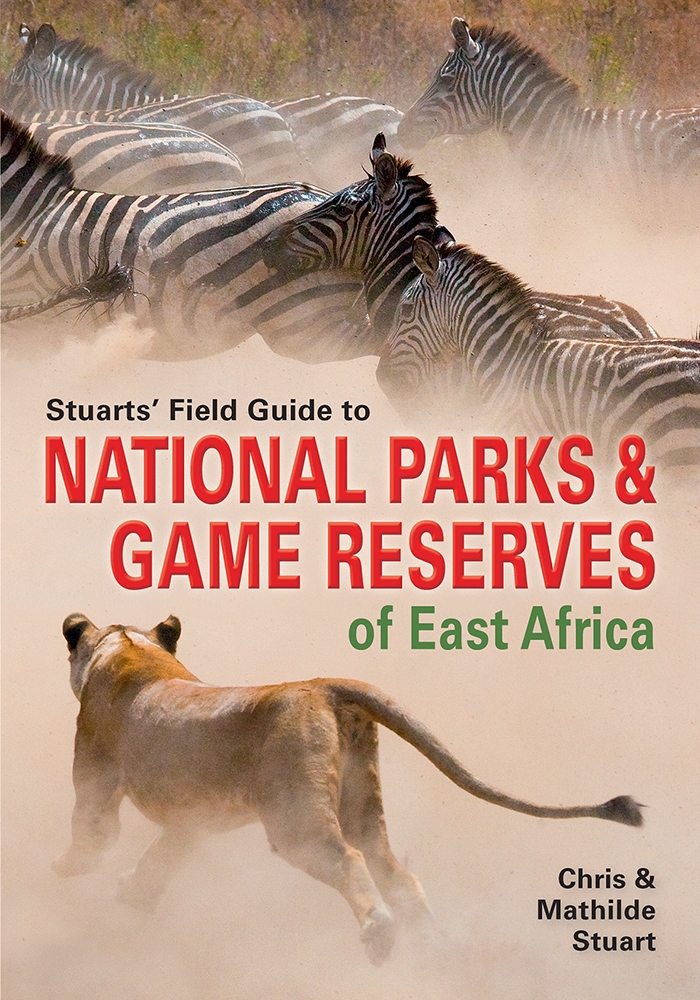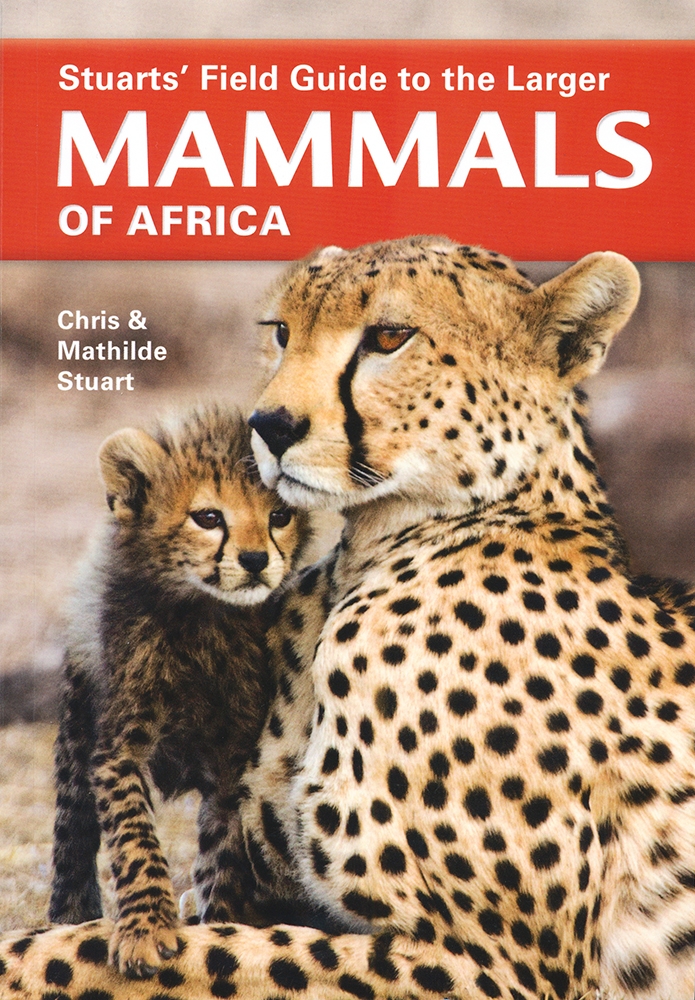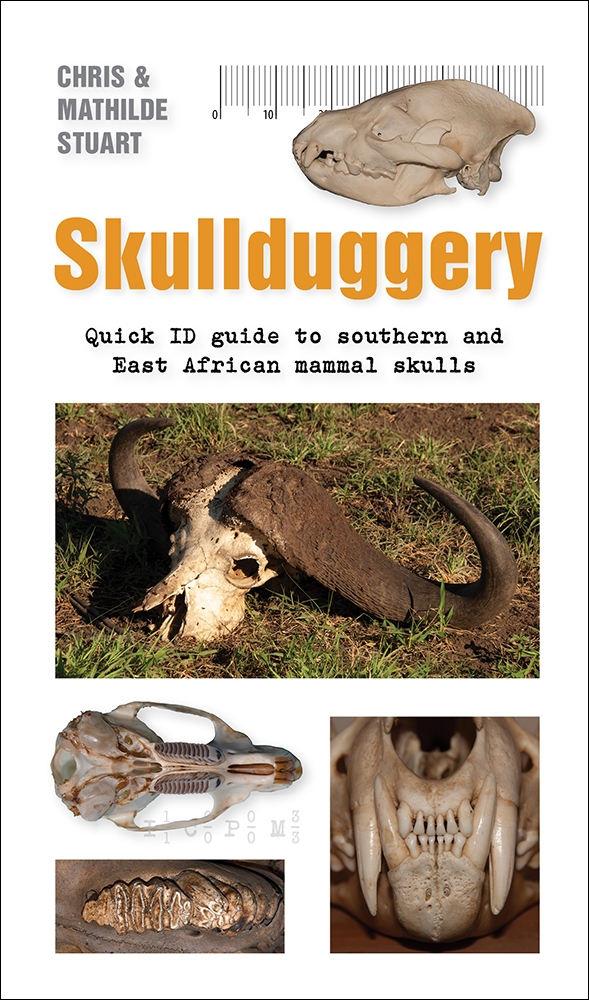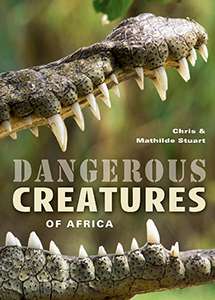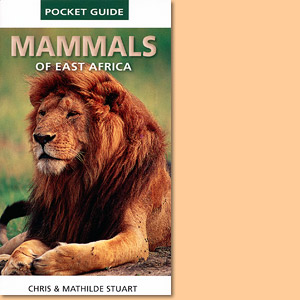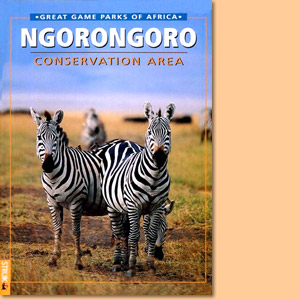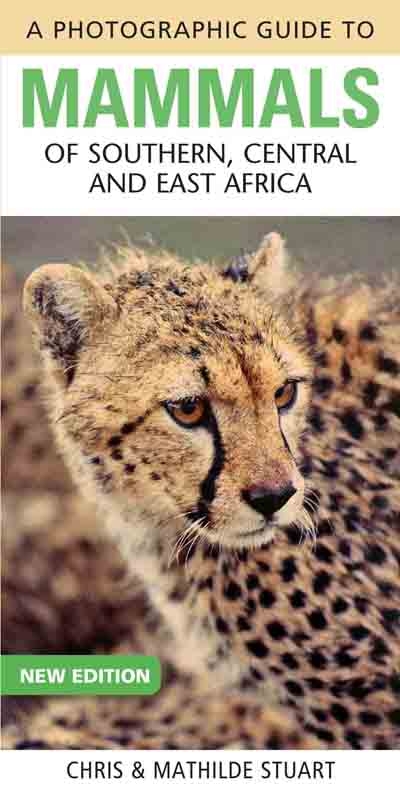Stuarts' Field Guide to National Parks and Nature Reserves of Namibia, Botswana, Zimbabwe and Zambia, by hris and Tilde Stuart

Stuarts' Field Guide to National Parks and Nature Reserves of Namibia, Botswana, Zimbabwe and Zambia, by Chris and Tilde Stuart. Penguin Random House South Africa. Imprint: Struik Nature. Cape Town, South Africa 2022. ISBN 9781775847205 / ISBN 978-1-77584-720-5
Stuarts' Field Guide to National Parks and Nature Reserves of Namibia, Botswana, Zimbabwe and Zambia, by hris and Tilde Stuart covers a group of countries that lie north of South Africa and fall within southern and south-central Africa - a territory the authors refer to as greater southern Africa.
From west to east it includes Namibia, Botswana, Zimbabwe, Zambia and Malawi, with brief coverage of Mozambique and Angola. It is a region of contrasts, containing what is plausibly the world's oldest desert, a vast semi-desert, mountain ranges, coastlines, one of the mightiest rivers on the continent, savanna grasslands and woodlands, and the world's largest inland river delta. Here we find some of Africa's best-known conservation areas, such as Etosha, Chobe, Kafue, South Luangwa, Mana Pools, Hwange and Nyika. In the west of greater southern Africa lies the ancient Namib Desert, flanked in the west by the Atlantic Ocean. In the east lies Mozambique and the Indian Ocean. Two of the Great Rift Valley lakes are located in the region: the full length of Lake Malawi (Nyasa) and the southernmost tip of Lake Tanganyika. The Okavango Delta in northern Botswana is the largest inland river delta in the world, eventually losing its waters to the underlying Kalahari sands. The region is topographically diverse and home to a wide range of vegetation: from desert lichens to tropical forests. Popular media has often painted Africa's landscapes as pristine until the arrival of European explorers and settlers. This is inaccurate: Humans have lived in the region for thousands of years and wrought many changes on the landscape with fire, livestock grazing, cultivation and hunting. However, human numbers were initially relatively low, and it is only in the past 100 years that populations have exploded beyond the capacity of available resources. The massive population growth within this region is most obvious in Malawi and, in more recent years, in Zambia, Zimbabwe and Mozambique. During the 20th century, large tracts of land were - encouragingly - set aside for conservation, but in recent decades many of these have been neglected. During the 1970s and 1980s, poaching became a major issue, the major targets being Hook-lipped and Square-lipped rhinoceroses and Savanna Elephant. Hook-lipped Rhinoceros were driven to extinction in Zambia, Malawi and Mozambique and underwent major onslaughts in Botswana and Zimbabwe. Elephant poaching escalated, especially in Angola, Mozambique, Zambia and Malawi. In recent years, Hook-lipped Rhinoceros have been reintroduced into Zambia and Malawi. With increased protection, the small surviving populations of Savanna Elephant have also stabilised throughout the region. Today, poaching remains a threat, reducing wildlife diversity and population size. This is most noticeable in Mozambique, Malawi and Zambia, and especially outside of conservation areas. Much of the region has been modified by the actions of growing human populations. This is the case even in those countries with low human densities such as Namibia and Botswana. Tracts of natural bushland have been cleared for agriculture, both subsistence and commercial, and trees converted into charcoal to feed the growing urban demand for cooking fuel. As conventional government-run power systems fail to keep pace, this threat is growing in the region. However, despite the impact of human activity on much of the environment, all is not lost. There are large areas that have been demarcated for the protection of wildlife. Certain NGOs, such as the Frankfurt Zoological Society, Peace Parks Foundation and African Parks, are making considerable contributions towards the management and protection of parks and conservation areas. Those interested in the region's wildlife and their habitats still have much to look forward to in the many parks and game reserves. [...]
This is an excerpt from Stuarts' Field Guide to National Parks and Nature Reserves of Namibia, Botswana, Zimbabwe and Zambia, by hris and Tilde Stuart.
Title: Stuarts' Field Guide to National Parks and Nature Reserves of Namibia, Botswana, Zimbabwe & Zambia
Author: Chris and Tilde Stuart
Publisher: Penguin Random House South Africa
Imprint: Struik Nature
Cape Town, South Africa 2022
ISBN 9781775847205 / ISBN 978-1-77584-720-5
Softcover, 14 x 19 cm, 320 pages, throughout colour photos and images
Stuart, Chris und Stuart, Tilde im Namibiana-Buchangebot
Stuarts' Field Guide to National Parks and Nature Reserves of Namibia, Botswana, Zimbabwe and Zambia
Stuarts' Field Guide to National Parks and Nature Reserves of Namibia, Botswana, Zimbabwe and Zambia.
Traveller's Wildlife Guide Southern Africa
Traveller's Wildlife Guide Southern Africa introduces 500 of Southern Africa’s most common amphibians, reptiles, birds, and mammals.
Stuart's Field Guide to National Parks and Game Reserves of East Africa
Stuart's Field Guide to National Parks and Game Reserves of East Africa provides an overview of some 58 protected areas across East Africa.
Stuarts’ Field Guide to the Larger Mammals of Africa
Stuarts’ Field Guide to the Larger Mammals of Africa concentrates on the more visible and easily distinguished larger species.
Stuarts' Field Guide to the Tracks & Signs of Southern, Central and East African Wildlife
Stuarts' Field Guide to the Tracks & Signs of Southern, Central and East African Wildlife, this is the 5th revised edition.
Carnivores: Quick ID guide to Africa's predatory mammals
Carnivores: Quick ID guide is a compact and quick ID identification guide to Africa's predatory mammals.
Flying Mammals Quick ID guide to the bats of Africa
Flying Mammals Quick ID is a compact and quick ID identification guide to the bats of Africa.
Avian Architects: Quick ID guide to nests and eggs of southern African birds
Avian Architects: Quick ID is a compact and quick ID identification guide to nests and eggs of southern African birds.
Primates: Quick ID guide to Africa's great apes, true monkeys and their relatives
Primates Quick ID is a compact and quick ID identification guide to Africa's great apes, true monkeys and their relatives.
Skullduggery: Quick ID guide to southern and East African mammal skulls
Skullduggery is a compact and quick ID identification guide to skulls of southern and East African mammals.
My first book of Southern African animal tracks
My first book of Southern African Animal Tracks introduces 55 different types of animals and their footprints.
Stuarts' Field Guide to Mammals of Southern Africa
Stuart's Field Guide to Mammals of Southern Africa covers near to 400 mammal species including Angola, Zambia and Malawi since the 5th edition of 2015.
Behaviour briefs: Quick guide to southern and East African animal behaviour
Why do they do that and what next? Behaviour briefs is a quick guide to southern and East African animal behaviour.
On Track: Quick ID Guide to Southern and East African Animal Tracks
On Track is a quick identification guide to tracks of Southern and East African most commonly found mammals, reptiles, rodents, birds and insects.
A Field Guide to the Tracks & Signs of Southern, Central and East African Wildlife
Latest edition of A Field Guide to the Tracks & Signs of Southern, Central and East African Wildlife.
Stuarts' Field Guide to National Parks and Nature Reserves of South Africa
Stuarts' Field Guide to National Parks and Nature Reserves of South Africa offers a comprehensive overview of 43 parks, reserves and wilderness areas.
Dangerous creatures of Africa
The focus of Dangerous creatures of Africa is on understanding, identifying, avoiding and surviving these potential hazards of the African wilds.
Taschenführer: Säugetiere, Südliches Afrika
Der Taschenführer Säugetiere: Südliches Afrika, legt seinen Schwerpunkt auf die größeren, öfter gesehenen Tierarten, schließt allerdings auch einige ungewöhnliche Arten ein.
Mammals Of East Africa Pocket Guide
Mammals Of East Africa Pocket Guide covers all of the common and some of the less common mammal species.
Mammals of Southern Africa Pocket Guide
Authoritative and colourfully illustrated, Mammals of Southern Africa Pocket Guide offers concise information.
Field Guide to Mammals of Southern Africa
A total of 337 species are covered in this fully revised comprehensive field guide to mammals of Southern Africa.
Field Guide to the Larger Mammals of Africa
Field Guide to the Larger Mammals of Africa provides over 400 colour photos, with concise, pertinent information highlighting the diagnostic features of each species.
Ngorongoro Conservation Area
From the series 'Great Game Parks of Africa' this is a portrait of the Ngorongoro Conservation Area.
Sasol Roadside Guide. Cape Town-Port Elizabeth: Discovering Nature Along the N2
The Sasol Roadside Guide Cape Town-Port Elizabeth: Discovering Nature Along the N2 interprets the surrounding countryside - plants, birds, mammals, reptiles, agriculture, geology.
A Photographic Guide to Mammals of Southern, Central and East Africa
A Photographic Guide to Mammals of Southern, Central and East Africa introduces 152 mammal species of each family group.
Field Guide to Tracks and Signs of Southern and East African Wildlife
Related to Southern African and East African Wildlife, this great field guide is about their tracks and signs, like droppings, feeding signs, scent marks and others.

